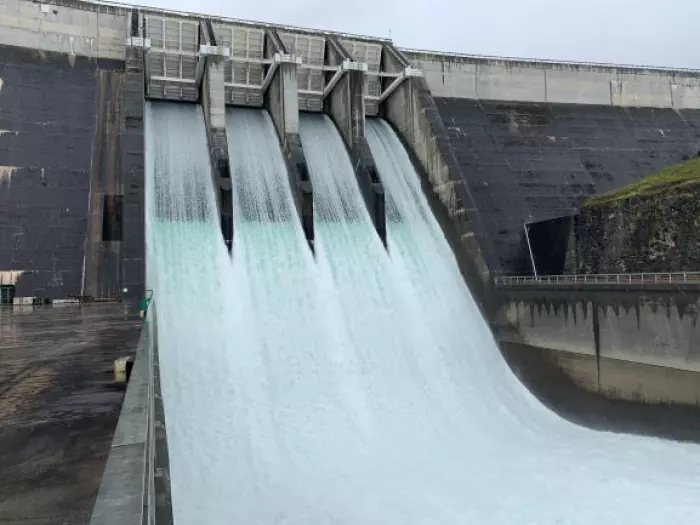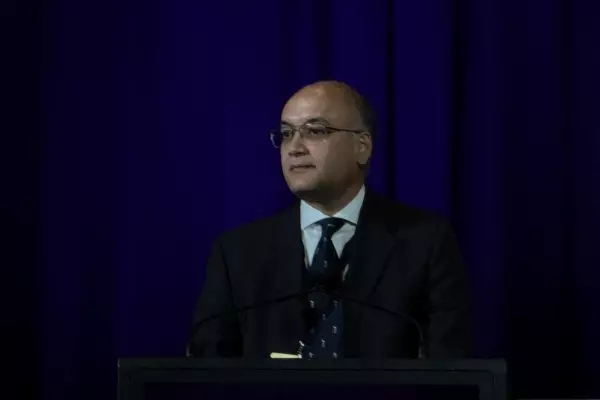We are yet to see the full force of the economic impacts covid and the Tiwai closure will have on employment, especially in the lower South Island.
However, these twin crises offer a real catalyst for ‘nation-building’.
If we are going to spend tax-funded billions to maintain employment, it is important we should do so on assets that will benefit the future generations from whom we are borrowing.
And such assets should make our economy more competitive, improve living standards and facilitate our transition to low carbon.
Much has been made of the increased electricity supply to the rest of New Zealand that will result from the Tiwai closure. Among other things, this will lead to falling wholesale electricity prices. This will be good for consumers.
But it’s not quite that straightforward. For a start the 5,500 Gigawatt hours of renewable Sout Island hydro-electricity – 13 percent of national demand - that will be released will need $650 million and seven years of transmission upgrades to get it to market.
One of the great advantages NZ has is its 65 percent low cost hydro-electricity, which comes with zero carbon and low operating cost.
Hydro needs water
But it has a downside. We need to have standby generation to cover the risk that we don’t get rain.
A dry year with 15 per less inflow of water into hydro lakes translates into needing about 5,000 Gwh in six months.
That is about 1,000 Megawatts of generation. And when it’s dry, it’s mainstay hydro facilities like Manapouri, Clyde, Roxburgh and the Waitaki that are forced to reduce output.
The Huntly elephant
There is also an ‘elephant in the room’ with our power supply system.
Sometime in the next 10 years the ageing and costly Huntly power station coal units will close and falling wholesale prices, post-Tiwai, will cause the closure of other gas-fired power stations that fill in the gaps when there isn’t enough water in hydro storage lakes.
As a result, New Zealand will be perilously short of this essential ‘dry year reserve’. This will get worse as climate change drives greater variability in hydro inflows.
If we expand our system with other renewables like wind, geothermal and solar, as the Interim Climate Change Commission (ICCC) has suggested, they too have intermittent output. They are not always available to be turned on quickly and reliably like a gas-fired ‘peaker’ plant.
So they can’t solve our dry year problem.
Replacing gas
New Zealand’s existing hydro is a perfect complement to wind and solar with readily variable power, but it can only provide so much intermittency support if we are to protect lake levels and minimum river flows for freshwater quality.
The ICCC has explored a number of options to cover dry year risk: overbuilding generation, hydrogen storage, biomass, batteries, and large scale interruption of supply, mostly to industrial users.
All of these look interesting but tend to be very expensive, have some big technical challenges, and may not be able to store energy for long. They need to be evaluated carefully.
One solution was recommended by the ICCC for further investigation – pumped hydro.
This is where water is pumped uphill when wholesale electricity prices are low - i.e., hydro inflows and storage are high- and released for generation when prices are high, i.e., when hydro inflows and storage are low.
Pumped hydro opportunity
A possible project exists at Lake Onslow, an existing lake in Central Otago that was created by damming of the Teviot River in 1890. It offers multi-year storage that could provide 5,000 Gwh of dry-year energy as well as intermittency support for any amount of wind and solar expansion.
It would involve an enlarged dam, and a tunnel to a 1,000MW power station alongside the Clutha River 700 metres below.
Such a project has many merits:
- It would eventually cause the retirement of gas-fired generators, which would remove the twin threats of rising gas prices and gas supply risk caused by depleting gas reserves, both of which will drive up wholesale electricity prices over time;
- It would eliminate the risk premium in electricity prices that can drive up ‘spot’ prices for wholesale electricity in dry years to an unlimited extent;
- Without these ‘opaque’ risk premiums, wholesale electricity prices would trend down with the cost reductions that we can all see in solar panels and wind turbines. Retail prices would have to follow, creating a significant social and economic productivity benefit for all of NZ;
- It would allow more wind and solar onto our system to meet growing demand, yet preserve reliability of supply from these volatile or intermittent sources of renewable energy. This would enable electricity to become the energy of choice for industry and transport;
- Lower prices would encourage industry to invest to substitute away from coal and other fossil fuels;
- Prices trending down would increase the speed of transition to electric transport; and
- NZ would achieve all this while becoming – and staying – 100 percent carbon-free in its electricity supply system for likely 50 years or beyond.
Post-carbon nation-building
This is indeed nation-building.
The Onslow project is big.
It would employ between 3,000 and 3,500 direct workers for four to five years, with possibly three times that many indirectly.
We need those jobs now.
It would cost between $3.5 billion and $4 billion.
But if this cost was spread across all electricity consumption, like an insurance premium, it would be only 0.5-to -0.75 cents per kilowatt hour - about $50 a year - for an average household.
Wholesale prices would likely drop by twice this much when it begins operating.
It might take two to three years to fill the lake. But once full, only the top few metres would be used for regulating intermittent wind and solar, and it might only be drawn down fully once every 10 years or so.
This is not a project that any one of the existing generator-retailer power companies is likely to undertake.
That’s partly because of the construction risk and scale, but also because they do not have any commercial incentive if it leads to falling wholesale prices.
It is a project that could invest in environmental offsets to protect our current natural environment. And if we don’t do it, climate change will eventually put at risk the very environmental capital we would seek to offset.
A state-owned scheme?
Onslow is not dissimilar to the Snowy 2 project now being started in Australia by the federal government-owned utility Snowy Hydro.
Snowy 2 is specifically aimed at solving Australia’s intermittency challenge as they make the transition from coal-fired electricity generation to wind and solar - a transition that is well under way.
But Snowy 2 is different from Onslow in one critical aspect: it can only store seven days of full generation.
Onslow could store six months’ full generation: that is what would make it so valuable to New Zealand.
More than 10,000 jobs for four to five years, lower electricity prices, electrification of industry and transport, 100 percent zero carbon electricity and increased economic productivity.
Nation-building indeed!
Dr Keith Turner was chief executive of Meridian Energy from 1999 to 2008. In the last 12 years he has been a director of four large Australian power utilities as well as chair of Fisher and Paykel Appliances, deputy chair of Auckland Airport, a member of the ICCC and a director of Chorus during the UFB rollout.










